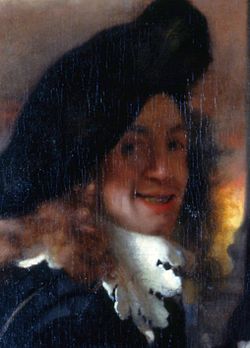

Very little is known about the life of Jan Vermeer, one of the greatest masters of the Golden Age of Dutch Painting. The date of his birth was not preserved, however, the date of baptism is known – October 31, 1632. He was the second child of a well-to-do entrepreneur.
On April 20, 1653, Jan Vermeer married Katarina Bolnes, they had 15 children, but several children died as newborns. The artist painted his pregnant wife in the picture “A Girl with Weights”. Strict horizontal and vertical surfaces emphasize the center of the composition – the woman’s hand holding the scales. The arrangement of objects emphasizes the semantic content of the picture. The works of Vermeer are filled with allegories, for example, the picture “The Last Judgment” behind the woman’s back and jewels in front of her symbolize the choice of a person between spiritual life and the vanity of worldly life.
On December 29, 1653, the beginning artist was accepted as a free master to the Delphi guild of St. Luke, uniting painters of all genres, masters of glass and faience, jewelers and art dealers. Already in the early works of Vermeer, the amazing skill of the colorist, the naturalness and vivacity of the compositional solutions is manifested. In the genre scenes, the artist brings lyricism and sophistication.
The talent of Jan Vermeer was highly appreciated by his contemporaries, but in his whole life he wrote no more than 50 works, many of which were lost. To date, we know of 34 works of the artist.
In the last years of his life, the financial situation of the artist greatly deteriorated. In 1672, the Franco-Dutch War broke out, and demand for paintings fell. Perhaps the difficult financial situation accelerated the approach of death. The artist died suddenly at the age of 43 years on December 15, 1675. After his death, his work was forgotten for a long time. Interest in the artist revived only in the XIX century, thanks to the activities of the critic and art historian Etienne Theophilus Tore, who “discovered” Vermeer for the general public in 1866.